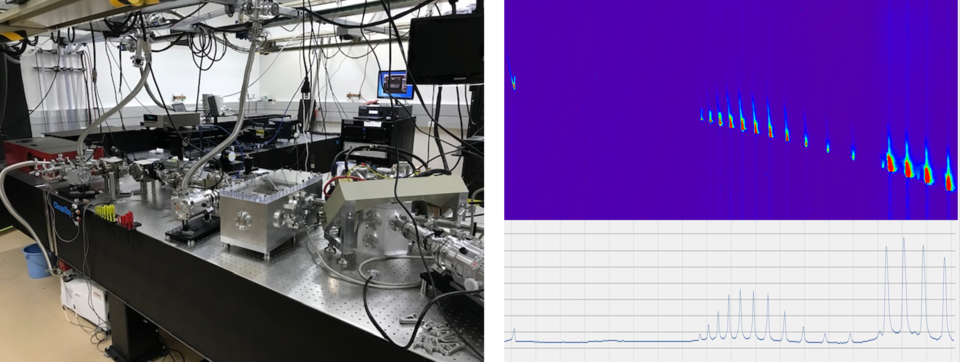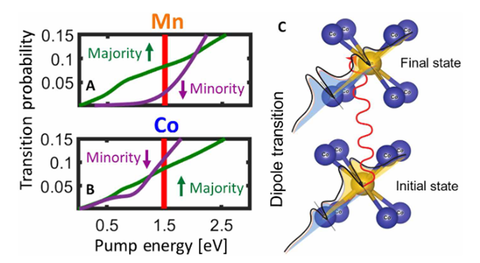Summary
The Dynamic EUV Imaging and Spectroscopy for Microelectronics program in the Spin Electronics group makes use of an ultra-fast, coherent, extreme ultraviolet (EUV) source based on high-harmonic generation (HHG) to address many problems faced by the microelectronics industry in the area of nanoscopic heat and spin transport in materials, interfaces and devices.
Description
Collaborations with industry leaders have led us to develop new measurement techniques to improve our understanding thermal transport, spin transport, and nanoscopic (and interfacial) material properties in active device structures. Such capability requires the ability to measure these properties at ultra-fast time scales (spanning the steady state to the far-from-equilibrium) with element or layer selectivity and doing so with nanoscale spatial resolution. This can only be achieved with photon energies in the extreme ultraviolet (EUV) and x-ray portions of the spectrum. At the heart of this effort is an ultrafast, coherent, extreme ultraviolet light source based on high-harmonic generation (HHG).
Major Accomplishments
NIST’s ultra-fast EUV spectrometer and microscope now online
Our EUV beamline to characterize dynamic, nanoscale processes in microelectron systems is now online after a 3 year effort to design, build and qualify the multiuse beamline and end chambers. Shown below is our first spectrum taken from a thin metallic film on silicon. With a time resolution approaching 20 femtoseconds and broadband EUV spectrum (20-100 eV) spanning core level electric transition edges for most relevant semiconductor and spintronics materials, this system will be the heart of our effort to address active device measurement and metrology needs called for by multiple sectors of the microelectronics industry.


Ultrafast Time-Resolved Spectroscopy and Imaging with Extreme Ultraviolet Light
Along with collaborators at the University of Colorado/JILA and Uppsala University in Sweden, we use coherent, high-harmonic generation light sources to probe dynamics in magnetic systems at time scales that span the femtosecond to the nanosecond. Recently, we have demonstrated that spectroscopic analysis of time-resolved magneto-optics can be used to test fundamental theories of ferromagnetism in metals under far-from-equilibrium conditions. These measurements will help inform researchers as to the ultimate scalability of magnetic memory as a replacement for dynamic random-access memory (DRAM) in computers. Here, we used a coherent source of ultrafast, extreme-ultraviolet (EUV) light based on high-harmonic generation (HHG). The EUV pulses were diffracted from lithographically patterned stripes of cobalt (see figure) and the magnetization-dependent spectrum of reflected EUV light was monitored as it changed over time. We can probe how the optical “pump” excitation affects the electrons near the Fermi level and hence the magnetization. In this experiment, we discovered about half of the resultant spin disorder could be explained in terms of optical modification of the electron band structure, as expected from Stoner electron-hole-pair theory, but the other half stems from the ultrafast formation of magnons (spin waves), as would be expected from quantum-mechanical Heisenberg theory.
Publications
- P. Tengdin et al. “Direct light–induced spin transfer between different elements in a spintronic Heusler material via femtosecond laser excitation” Science Advances, 6, eaaz1100 (2020)
- E. Turgut et al., “Controlling the Competition between Optically Induced Ultrafast Spin-Flip Scattering and Spin Transport in Magnetic Multilayers,” Physical Review Letters, 110, 197201 (2013).

